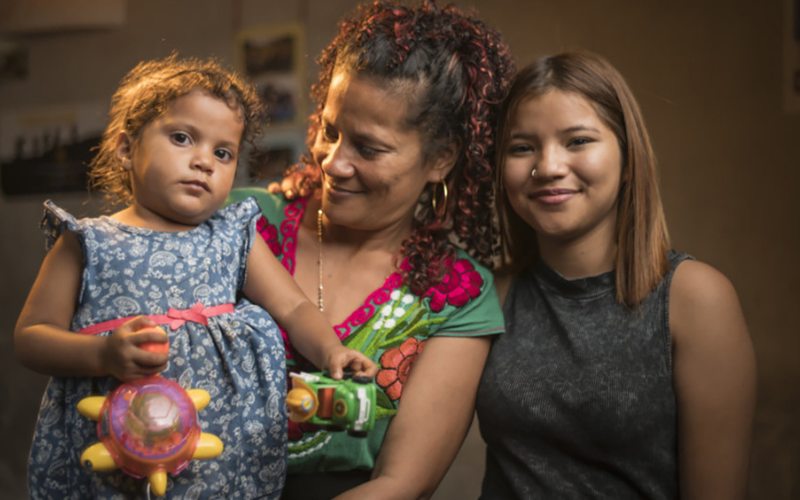A refugee is a person who moves out of his native country to a foreign region due to factors such as civil wars. As the world commemorates World Refugee Day on June 20, 2021, we will pause to reflect on the hardships that refugees have faced, particularly during this pandemic.
The United Nations established the 1951 Refugee Convention in 1951 to protect the rights of refugees in Europe in the aftermath of World War 2. The Convention was expanded in 1967 to address displacement throughout the rest of the globe.
As we approached 2021, there were more than 80 million people worldwide who had been displaced due to conflict or persecution. According to the latest UNHCR report, 30 million of those are refugees, while the rest are internally displaced or asylum seekers. Children make up nearly 50% of those whom negative factors have forcibly displaced. 55% of refugees come from 3 states: Syria, Palestine, and Venezuela.
Refugee journeys last year (2020)
In 2020, over 1 million people from 64 states became refugees. More than one-third of the world’s displaced people live in the African region. At least 30.6 million people were displaced across the region by the end of last year. Following violence in several regions of the East African country, nearly 60,000 Ethiopian refugees fled to neighboring states last year. According to the IOM, fighting broke out in Ethiopia’s northern Tigray region in November 2020, displacing more than 1million people.
Syrian refugees have continued to flee their state’s 10-year-long war in the Middle East, with nearly 134,000 reported to have left last year. Half of them fled to neighboring Turkey, which now has the globe’s biggest refugee population of over 3 million people. In the same year, nearly one-quarter of all Syrian refugees went to Germany. Following the state’s political and economic crisis, over 350,000 refugees fled to Latin America. 139,000 of these people fled to Peru, more than 65000 (80,000) to the Dominican Republic, and 60,000 to Brazil.
The UN has recorded more than 20,000 Myanmar refugees in Asia. Almost all of these refugees arrived in neighboring India and Bangladesh. Following 44 days of fighting between Armenian and Azerbaijani forces in the disputed territory of Nagorno-Karabakh, over 80,000 refugees have fled to Europe from Azerbaijan. Across the Atlantic, the US received more than 8,000 refugees from 20 states in 2020. Only 3 countries provided nearly 50% of these refugees: Venezuela (1,600), El Salvador (1,200), and Guatemala (1,100). This is significantly less than the 32,000 refugees received by the country two years ago (2019).
In 2020, Canada will accept more than 7,000 refugees from over 20 states. Nigeria (1,400), Iran (1,200), and Hungary were the top 3 countries of origin (629). On the other side of the globe, Australia received only 956 refugees in 2020, the majority of whom were from Iran.
The largest refugee camps
The Kutupalong refugee camp in Cox’s Bazar, Bangladesh, is the globe’s biggest. It was established informally in the early 1990s as Myanmar’s minority Rohingya fled several crackdowns in Rakhine state.
The Dadaab refugee complex in Kenya comprises 3 large refugee camps: Hagadera, Dagahaley, and Ifo – and houses more than 200,000 refugees near the Somali border. Dadaab came into existence in 1991 in the aftermath of Somalia’s civil war and expanded in 2011 in the aftermath of widespread drought and famine.
At least more than 200,000 refugees, mostly from South Sudan and Somalia, live in the Kakuma refugee camp in NW Kenya. The camp came into existence in 1992 in response to the arrival of thousands of Sudanese children fleeing the civil war. Kenya’s government declared in March 2021 that it would shut down the Dadaab and Kakuma refugee camps by June 30th, 2022.
In 2012, Jordan established the Zaatari refugee camp to house Syrian refugees. It’s now the globe’s biggest Syrian refugee camp.
States with the most refugees
Syrians have the biggest refugee population today, with over 6 million people, followed by Palestinians and Venezuelans (4 million). As of 2020, only 12 states accounted for 88% of the world’s refugees. On the receiving end, only 16 states host 65% of the globe’s refugees. The state with the most refugees in Turkey, followed by Jordan (3 million) and Colombia. Germany has the highest number of refugees in Europe, with over 1.1 million. According to the United Nations High Commissioner for Refugees (UNHCR), developing countries house 86 percent of the world’s refugees.
MORE:
- Ethiopia Prepares its Elections amid Conflict and Dispiritedness
- Coastguards Rescue Refugees Off the Libyan Waters
- Ethiopia Shuts Down Camps Housing Eritrean Refugees


















